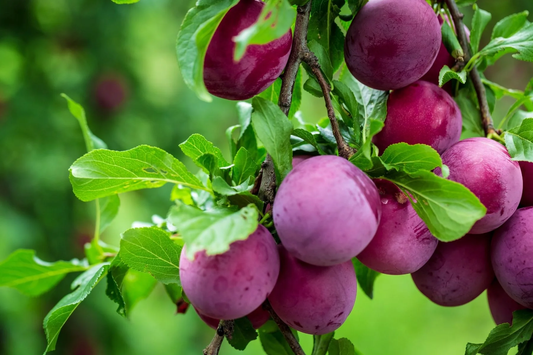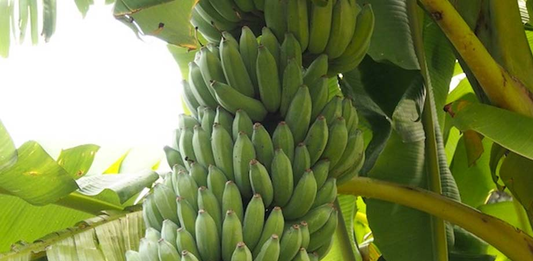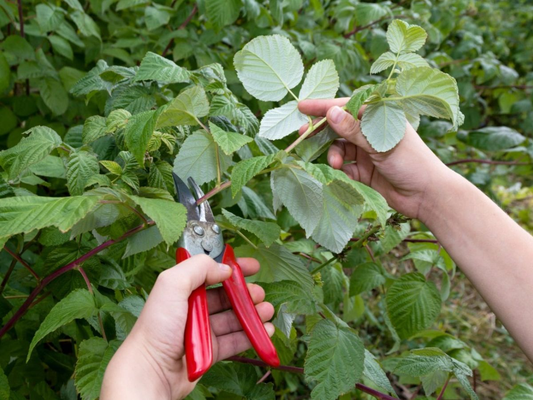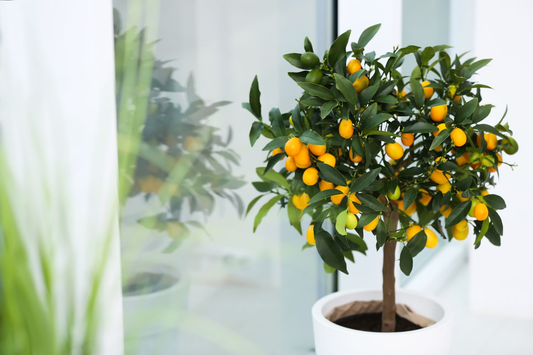How to Grow Thyme Indoors: The Italian Grandma Method That's Going Viral
Share
Table of Contents
1. Introduction
Thyme, a versatile herb in both cooking and gardening, has become a staple in many households. Whether you're using it to season savory dishes or to add fragrance to your indoor space, thyme is a go-to herb that has many benefits. In recent years, thyme has gained popularity for indoor gardening, thanks to its easy care and culinary uses. Growing thyme indoors allows you to enjoy fresh herbs year-round, right in your own home.
Here’s why thyme is such a prized herb:
- It adds a distinctive, aromatic flavor to a wide range of dishes, from pasta and soups to meats and salads.
- It’s a hardy plant that adapts well to indoor environments, making it perfect for those with limited outdoor space.
- Thyme can be grown in small containers, making it ideal for apartment dwellers or people with limited gardening space.
But what makes thyme even more exciting is the rise of the "Italian Grandma Method", a simple, time-tested approach that has gone viral among indoor gardeners. Passed down through generations, this method focuses on natural, hands-on techniques to grow thyme in containers, using love and care, much like an Italian grandma would in her kitchen. It’s a method that not only nurtures the plant but also connects gardeners with the heritage of their culinary roots.
In this blog, we will explore:
- The reasons why thyme is an ideal herb for indoor gardening.
- The viral "Italian Grandma Method" and why it’s becoming a favorite among indoor gardeners.
- A step-by-step guide on how to grow thyme indoors, from choosing the right container to harvesting your bounty.
So, whether you're a seasoned gardener or just starting your indoor herb garden, you’ll find everything you need to successfully grow and enjoy thyme indoors with the simple, yet effective "Italian Grandma Method." Let’s dive into the world of indoor thyme growing!

2. Why Grow Thyme Indoors?
Thyme is a versatile herb that offers several advantages when grown indoors, making it an ideal choice for those looking to have fresh herbs available year-round. Let’s explore the main benefits of growing thyme indoors:
- Year-round access to fresh thyme for cooking: One of the greatest advantages of growing thyme indoors is the ability to harvest fresh leaves throughout the year. No more running to the store for thyme, especially in the winter months when fresh herbs can be hard to find.
- Compact nature makes it suitable for small spaces: Thyme is a small, low-growing plant that doesn’t require a lot of space. It’s perfect for apartments, small kitchens, or windowsills. Even with limited room, you can easily grow thyme indoors in a small pot or container.
- Indoor thyme plants are often healthier due to controlled environments: Indoors, you have control over environmental factors such as temperature, humidity, and light. With the right care, thyme plants grown indoors tend to be healthier because they are shielded from outdoor pests, diseases, and harsh weather conditions.
- Thyme is a hardy herb that thrives indoors with proper care: Thyme is a hardy herb, well-suited for indoor growing. It can tolerate a variety of conditions and, with the right care, it will thrive. Whether you're a beginner or an experienced gardener, thyme is easy to grow indoors.
While growing thyme indoors has its advantages, there are a few differences when compared to growing it outdoors:
- Indoors: Requires more attention to light and humidity control. The environment can be manipulated to provide the best conditions for growth.
- Outdoors: Grows naturally with more space and exposure to the elements, but may be vulnerable to pests, diseases, and weather conditions that can affect its growth.
3. What is the "Italian Grandma Method"?
The "Italian Grandma Method" for growing thyme indoors has taken the indoor gardening world by storm. It’s a traditional, hands-on approach that’s been passed down through generations, capturing the essence of old-world gardening wisdom. This method focuses on simplicity, patience, and attention to detail, much like an Italian grandmother would care for her plants in a humble kitchen garden.
The key aspects of the Italian Grandma Method include:
- Traditional, hands-on approach: Unlike modern, automated gardening methods, this technique involves nurturing the plant with the gardener’s own hands. It’s all about giving thyme the personal touch—whether it’s gently pruning or checking the soil moisture with a finger, it’s about creating a bond with the plant.
- Specific planting techniques and care practices: The method emphasizes the importance of starting with high-quality soil, proper drainage, and ensuring the thyme receives adequate but not overwhelming sunlight. It also stresses the importance of not overwatering, a practice that’s often passed down as part of the family’s gardening lore.
- Anecdote or story: One popular story is that of an Italian grandmother who would plant thyme in a small clay pot and place it on her kitchen windowsill. Every morning, she would talk to the plant, water it with love, and ensure it always had enough sunlight. Her thyme plants were so lush and flavorful that neighbors would often ask for a clipping. This simple, loving approach to growing thyme became legendary and eventually inspired the viral method many are now following.
Compared to modern, commercial methods of indoor gardening, the Italian Grandma Method is a much more personal and organic approach. While modern techniques may involve high-tech grow lights, hydroponics, or automated watering systems, this method relies on natural care and intuition. It’s about fostering a connection with the plant rather than relying solely on gadgets or chemical additives.

4. Choosing the Right Pot and Container
Selecting the right container for growing thyme indoors is crucial for the health of the plant. The right pot provides the proper environment for the plant to thrive, ensuring it has enough space, drainage, and the right conditions for growth. Here’s what to consider when choosing a pot for your thyme:
-
Recommended size, shape, and material:
- Size: Choose a pot that is 6-8 inches in diameter for a small thyme plant. Thyme has shallow roots, so a smaller, compact container is ideal.
- Shape: A shallow, wide pot is recommended to allow thyme to spread out naturally.
- Material: Terra cotta and ceramic pots are excellent choices. Terra cotta allows for natural air circulation, which helps prevent overwatering, while ceramic pots provide stability and help retain moisture.
- Drainage holes and the need for proper water flow: Ensure the container has drainage holes at the bottom. Proper drainage is vital to prevent water from accumulating at the bottom, which could lead to root rot. Make sure the pot allows excess water to escape, ensuring the roots don’t stay soggy.
Eco-friendly options: If you’re looking for a sustainable gardening option, consider using recycled materials such as old wooden boxes, tin cans, or repurposed containers. These eco-friendly choices can work just as well for growing thyme, and they give your indoor garden a unique and personal touch.
Aesthetic considerations: When selecting a pot for thyme, consider how it will complement your home décor. A rustic terra cotta pot can add a touch of earthy charm, while a sleek ceramic container can create a more modern look. Choose something that enhances the beauty of your home while providing the thyme with the right growing conditions.
5. Soil Selection and Preparation
Choosing the right soil for your indoor thyme plant is essential for its health and growth. Thyme thrives in well-draining, slightly alkaline soils that mimic its native environment. Here’s how to select and prepare the perfect soil for thyme:
-
Best soil types for thyme:
- Well-draining soil: Thyme needs soil that drains well to prevent water from sitting around the roots, which can cause root rot. Look for a soil mix that allows water to pass through quickly.
- Sandy soil: Thyme naturally grows in dry, rocky soils with good drainage. Adding sand to your mix can help replicate these conditions.
- Slightly alkaline soil: Thyme prefers a soil pH between 6.0 and 8.0. Avoid overly acidic soils, as they can hinder the plant’s growth.
-
Tips on creating the right soil mix for thyme: To create an ideal soil mix for your thyme plant, blend the following:
- Two parts potting soil (provides the base structure and nutrients).
- One part sand (helps with drainage and mimics natural thyme soil).
- One part perlite (improves aeration and further ensures good drainage).
This mix will give your thyme the right balance of moisture retention and drainage, allowing the roots to thrive without staying soggy.
- How to maintain the soil's pH level for optimal thyme growth: Regularly check the soil’s pH level using a soil test kit. If your soil is too acidic, add some lime to increase the alkalinity. If it’s too alkaline, you can add sulfur to lower the pH. Keeping the pH level within the ideal range ensures your thyme plant gets the nutrients it needs.
- Importance of refreshing the soil or repotting thyme plants periodically: Over time, the nutrients in the soil can be depleted. Refresh the soil by repotting your thyme plant every 1-2 years. This helps prevent the roots from becoming root-bound and ensures the plant has access to fresh, nutrient-rich soil.
6. Planting Thyme: Step-by-Step Guide
Planting thyme indoors is a straightforward process that can be done from seeds, young plants, or even cuttings. Follow this step-by-step guide to ensure you start your indoor thyme garden off right:
-
How to start from seeds or buy a young plant:
- Starting from seeds: If you’re starting from seed, sow thyme seeds indoors about 6-8 weeks before the last frost date. Fill your container with a well-draining soil mix (see the previous section for recommendations). Sprinkle the seeds evenly over the surface of the soil and lightly press them into the soil with your fingers or a flat object. Cover the container with a clear plastic lid or plastic wrap to create a humid environment, and place it in a warm location with indirect sunlight.
- Buying a young plant: If starting from a young plant, choose a healthy, compact thyme plant from a nursery. Gently remove the plant from its nursery pot, shake off excess soil, and place it into your prepared container, ensuring it’s centered and sits at the same depth as it was in the original pot.
-
The process of sowing thyme seeds in a container:
- Fill the container with your prepared soil mix, leaving about an inch of space from the rim.
- Evenly distribute the thyme seeds on top of the soil surface, ensuring they’re not crowded. Thyme seeds are tiny, so a light, even scattering will do.
- Gently press the seeds into the soil using a flat surface, or use a seed-starting tool to ensure good seed-to-soil contact. You don’t need to bury the seeds deep as thyme prefers light to germinate.
-
The best planting depth and spacing for seeds or seedlings:
- Seeds: Plant thyme seeds about 1/8 inch deep. Thyme doesn’t require deep planting, and the seeds need light to germinate.
- Seedlings: If transplanting a young thyme plant, ensure the root ball is level with the surface of the soil. Leave about 6-8 inches between each plant to allow for spreading growth.
-
Initial watering practices and light requirements for thyme:
- After planting, water the soil lightly to moisten it, but avoid overwatering. Thyme is drought-tolerant and prefers dry conditions, so it’s better to err on the side of under-watering.
- Place your container in a bright location where the plant will receive at least 6 hours of indirect sunlight daily. Thyme thrives in warm, sunny spots but be cautious of direct, harsh sunlight, which can scorch young plants.
Additional tips on growing thyme from cuttings or root division: If you prefer to grow thyme from cuttings or root division, follow these steps:
- Cuttings: Take a 4-inch cutting from a healthy thyme plant. Remove the leaves from the lower half of the stem and dip the cut end in rooting hormone. Place the cutting in a small container with moist, well-draining soil. Keep it in a warm, bright spot and mist occasionally to encourage rooting.
- Root division: When thyme becomes too large, divide the plant by gently separating the roots and replanting them in separate containers. This is best done in early spring or fall.

7. Ideal Growing Conditions for Indoor Thyme
Thyme is a hardy herb that thrives in specific growing conditions. Ensuring the right light, temperature, humidity, and airflow will help your indoor thyme plant grow strong and healthy. Here are the ideal conditions for growing thyme indoors:
-
Light requirements:
- Direct sunlight: Thyme thrives in bright, direct sunlight. Place your thyme plant near a south- or west-facing window where it can receive at least 6 hours of sunlight per day. This ensures the plant gets enough light for healthy growth and flavor development.
- Grow lights: If natural sunlight is limited or inconsistent, you can use grow lights to supplement. Choose a full-spectrum LED or fluorescent grow light, which mimics natural sunlight. Position the light about 6-12 inches above the plant and leave it on for 12-16 hours a day.
- Ideal amount of light per day: Thyme requires a minimum of 6 hours of light per day. The more light it receives, the healthier and more flavorful it will be.
-
Temperature preferences:
- Warm, but not hot: Thyme prefers a warm environment, ideally between 60°F to 75°F (15°C to 24°C). Avoid placing thyme near heat sources such as radiators or vents, as temperatures above 85°F (29°C) can stress the plant.
- Maintaining optimal temperatures: In cooler indoor environments, use a space heater or heat mat to keep the temperature stable. Be sure to avoid sudden temperature fluctuations that can negatively impact thyme’s growth.
-
Humidity:
- Ideal humidity level: Thyme prefers low to moderate humidity levels, around 40-50%. Too much humidity can lead to mold and mildew, while too little can dry out the plant.
- How to achieve the right humidity: If you’re growing thyme in a dry environment, consider placing the plant on a tray filled with pebbles and water to increase moisture levels. Avoid using humidifiers, as thyme prefers drier air.
-
Air circulation:
- Importance of airflow: Good air circulation is essential for preventing diseases and pests, which can thrive in stagnant environments. Place your thyme near a fan or ensure it gets enough fresh air, especially during humid months.
- How to promote airflow: Keep thyme plants in a well-ventilated room and avoid overcrowding. This will reduce the risk of fungal infections and pests such as aphids or spider mites.
-
Adjusting conditions in winter:
- Dealing with less light: In winter, when natural light is limited, supplement with grow lights as necessary. Adjust the position of your plant to ensure it gets the most sunlight available during the day.
- Maintaining warmth: Ensure your indoor thyme is kept in a consistent, warm location. Avoid placing it near drafty windows or doors where cold air could stunt its growth.

8. Watering Thyme: The Key to Success
Watering is a crucial aspect of thyme care, but it’s important to strike a balance. Thyme is a drought-tolerant herb, and while it needs regular watering, it also dislikes being overwatered. Proper watering practices will help prevent common issues like root rot and ensure healthy growth.
-
When to water thyme and how often:
- Thyme prefers its soil to dry out between waterings. Water the plant when the top 1-2 inches of soil feel dry to the touch. In general, watering once a week is sufficient, but during the summer months or warmer indoor temperatures, you may need to water more frequently.
- Reduce watering during winter when thyme’s growth slows down and the air is drier, allowing the soil to dry out more thoroughly between waterings.
-
How to avoid overwatering and root rot:
- Overwatering is one of the most common mistakes when growing thyme. Ensure that your container has proper drainage to allow excess water to escape. Avoid letting water sit at the bottom of the pot, as this can lead to root rot.
- If the soil is consistently soggy, consider reducing the watering frequency or using a well-draining soil mix with added perlite or sand.
-
Signs of under-watering and over-watering:
- Under-watering: If the leaves are wilting, yellowing, or dry, thyme may not be getting enough water. Make sure to water more frequently and check the moisture level of the soil.
- Over-watering: Yellow or mushy leaves, especially at the base of the plant, indicate overwatering. If you notice this, reduce watering and ensure the soil is well-draining to avoid waterlogging.
-
How to water thyme effectively:
- Water thyme from the base, not the leaves. Pour water directly into the soil, avoiding getting water on the leaves, as this can promote mold or fungal growth. Water until it starts to drain out from the bottom of the pot.
- If using a saucer, empty it after watering to prevent the roots from sitting in water.
9. Pruning and Harvesting Thyme
Pruning and harvesting thyme regularly are essential for keeping the plant healthy, encouraging new growth, and ensuring a steady supply of fresh leaves for cooking. Proper techniques help prevent leggy plants and promote a compact, bushy thyme plant that thrives indoors.
-
Tips for pruning thyme to encourage healthy growth and prevent leggy plants:
- Prune thyme regularly to remove dead or woody stems. This encourages fresh, new growth and helps the plant maintain a compact shape.
- Use sharp scissors or pruning shears to avoid damaging the plant. Snip the stems just above a pair of leaves or nodes to encourage new growth from that point.
- Prune the plant in the early spring to help it recover from winter and in the late summer to keep it tidy and encourage a second round of growth.
- If your thyme plant becomes leggy or starts to stretch towards the light, trim the long stems to promote a bushier shape.
-
How to harvest thyme without harming the plant:
- Snipping stems for use in cooking: When harvesting thyme, always cut off stems rather than pulling off individual leaves. Snip them close to the base, leaving enough foliage for the plant to continue growing. Harvesting from the top will also encourage the plant to branch out.
- The best times to harvest: For the best flavor, harvest thyme before the plant flowers. The leaves have the most potent aroma and flavor just before blooming. If the plant starts to bloom, the flavor may diminish slightly.
- How to dry thyme for long-term use: To preserve thyme, tie several stems together and hang them upside down in a cool, dry place with good airflow. You can also use a dehydrator or oven on low heat to speed up the drying process. Once dried, strip the leaves from the stems and store them in an airtight container.
-
Encourage regular harvesting to promote new growth:
- Regular harvesting encourages thyme to grow more vigorously. By trimming the plant, you stimulate the growth of new shoots and prevent the plant from becoming too woody or sparse.
- Harvesting often ensures a continuous supply of fresh thyme leaves while maintaining the plant’s overall health and productivity.
10. Common Problems and Troubleshooting
While growing thyme indoors is generally easy, there are a few common problems that can arise. Understanding the potential issues and knowing how to troubleshoot them can help ensure your thyme plant stays healthy and productive.
-
Overwatering and root rot:
- Overwatering is a common issue when growing thyme indoors. Thyme does not like wet feet and can develop root rot if the soil remains soggy for too long.
- Solution: Ensure your pot has proper drainage and allow the soil to dry out between waterings. If you suspect root rot, remove the plant from the pot, trim any affected roots, and repot it in fresh, well-draining soil.
-
Pests that might affect indoor thyme:
- Aphids: These small insects can infest thyme plants, sucking out sap and causing leaves to curl and yellow.
- Spider mites: These tiny pests thrive in dry conditions and leave webbing on the plant while causing yellowing or speckled leaves.
- Solution: Check your thyme regularly for pests. Use insecticidal soap, neem oil, or a strong water spray to remove pests. Make sure to isolate the infected plant from others to prevent spreading.
-
Lack of sunlight and how to address it:
- Thyme needs at least 6-8 hours of direct sunlight a day. Without sufficient light, the plant may become leggy or fail to thrive.
- Solution: Place your thyme plant near a sunny window or use grow lights to supplement natural light, especially during the winter months when sunlight is limited.
-
Yellowing leaves and what it indicates about the plant’s health:
- Yellowing leaves are often a sign of either overwatering, nutrient deficiency, or a pest infestation.
- Solution: If yellowing is due to overwatering, adjust watering habits. If it’s a nutrient issue, consider fertilizing with a mild, organic fertilizer. If pests are the cause, inspect the plant for signs of infestation and treat accordingly.
-
Solutions and tips for overcoming these problems:
- Regularly check for signs of overwatering, pests, and poor sunlight.
- Ensure proper care, such as providing good drainage, avoiding waterlogging, and offering adequate light and airflow.
- Prune dead or infected leaves to keep the plant healthy and encourage new growth.

11. The Benefits of Growing Thyme Indoors
Growing thyme indoors not only provides a steady supply of fresh herbs for cooking but also offers several health, emotional, and environmental benefits. Let’s explore the advantages of having thyme as part of your indoor garden.
-
Health benefits of thyme:
- Rich in antioxidants and vitamins: Thyme is packed with antioxidants, including flavonoids and phenolic acids, which help protect the body from free radical damage. It also contains essential vitamins like Vitamin C, Vitamin A, and Vitamin K.
- Uses in herbal medicine and boosting immunity: Thyme has long been used in traditional medicine for its antimicrobial and anti-inflammatory properties. It can help boost the immune system and alleviate respiratory issues like coughs and congestion.
- Potential air-purifying benefits of indoor herbs: As with other indoor plants, thyme can help purify the air by absorbing toxins and releasing oxygen. It can improve air quality and create a healthier indoor environment.
-
Emotional and psychological benefits of indoor gardening:
- Indoor gardening has been shown to reduce stress, anxiety, and depression. Caring for plants like thyme provides a calming, therapeutic activity that fosters a sense of accomplishment and well-being.
- Growing herbs indoors can improve focus and mood, offering a natural way to boost your mental health while providing the joy of growing something from seed to harvest.
12. Recipe Ideas to Use Fresh Thyme
Thyme is an incredibly versatile herb that can enhance the flavor of a wide variety of dishes. Here are a few Italian-inspired recipes where fresh thyme truly shines:
-
Classic Italian chicken dishes:
- Pollo al Limone (Lemon Chicken): A simple yet flavorful Italian dish where thyme adds an aromatic depth to the lemon and garlic marinade. It pairs beautifully with roasted potatoes or a fresh salad.
- Chicken Cacciatore: A rustic Italian stew with chicken, tomatoes, and bell peppers, where thyme infuses its earthy flavor into the rich, savory sauce.
-
Herb-infused oils and sauces:
- Thyme-infused olive oil: A great way to use fresh thyme. Simply heat olive oil and steep fresh thyme in it to create a fragrant herb oil perfect for drizzling over roasted vegetables or pasta.
- Thyme pesto: Blend fresh thyme with basil, garlic, Parmesan, and olive oil for a unique twist on classic pesto. It’s a perfect topping for pasta or even as a dip for bread.
-
The versatility of thyme in salads, roasted vegetables, and even desserts:
- Herb salad: Fresh thyme adds a delicate herbal note to any salad, particularly when paired with goat cheese, roasted beets, and a simple vinaigrette.
- Roasted vegetables: Thyme is a perfect herb for roasted root vegetables like carrots, potatoes, and parsnips, bringing out their natural sweetness.
- Thyme in desserts: Thyme can even be used in sweet dishes, such as in shortbread cookies or infused in syrup for drizzling over fruit salads or cakes.
13. Conclusion
Growing thyme indoors offers a unique blend of convenience and fulfillment, and the "Italian Grandma Method" makes it easier than ever to cultivate this hardy herb right at home. This hands-on, traditional approach has gained attention for its simplicity and effectiveness, allowing anyone to enjoy fresh thyme year-round without the need for a large garden. Whether you're a seasoned cook or a beginner, having fresh thyme on hand can elevate your meals, adding rich flavor and fragrance to a variety of dishes.
From Italian classics to creative new recipes, thyme is a versatile herb that fits into almost any dish, from savory stews and pastas to light salads and roasted vegetables. Having a small indoor garden of herbs, such as thyme, not only enhances your cooking but also brings a sense of satisfaction that comes with growing your own food.
We encourage you to give indoor thyme growing a try, embracing the "Italian Grandma Method" to create a thriving little herb garden in your home. By following the simple care tips provided, you can enjoy the rewards of fresh thyme right at your fingertips. Keep your plant happy with adequate light, water, and occasional pruning, and you'll be able to harvest its fragrant leaves for many meals to come.
14. Frequently Asked Questions (FAQ)
1. Can I grow thyme indoors year-round?
Yes, with proper care, thyme can thrive indoors all year long. It enjoys a warm environment and adequate light, making it suitable for indoor cultivation in all seasons.
2. How much sunlight does thyme need indoors?
Thyme needs about 6-8 hours of direct sunlight a day. If natural light is insufficient, consider using a grow light to supplement the lack of sunlight, ensuring your plant gets the light it needs.
3. How do I know when to harvest my thyme?
Harvest thyme when the stems are at least 6 inches tall, and the leaves are lush. To ensure the plant remains healthy, avoid harvesting more than 1/3 of the plant at a time. This promotes continuous growth.
4. Why are the leaves on my thyme plant turning yellow?
Yellow leaves on thyme plants can indicate several issues: overwatering, poor drainage, or insufficient light. Ensure the plant is in a well-drained pot and receives adequate sunlight for optimal health.
5. Can thyme be grown from cuttings indoors?
Yes, thyme can be propagated from cuttings. To do so, snip a 4-inch stem, remove the lower leaves, and plant the stem in well-draining soil. It should root and grow just like a new plant.
6. Can I grow thyme in a smaller pot?
While thyme is a small plant, it still requires space for its roots to grow. A small to medium-sized pot is best for optimal growth. Make sure the pot has good drainage to prevent root rot.
Additional Resources
Best Plants for Air Quality: How One Plant Reduced My Allergies by 80% – XRoci
How to Care for Flowering Indoor Plants: The 5-Minute Hack That Makes – XRoci
How to Grow Houseplants: I Tested 5 Viral Methods and Was Shocked by t – XRoci




